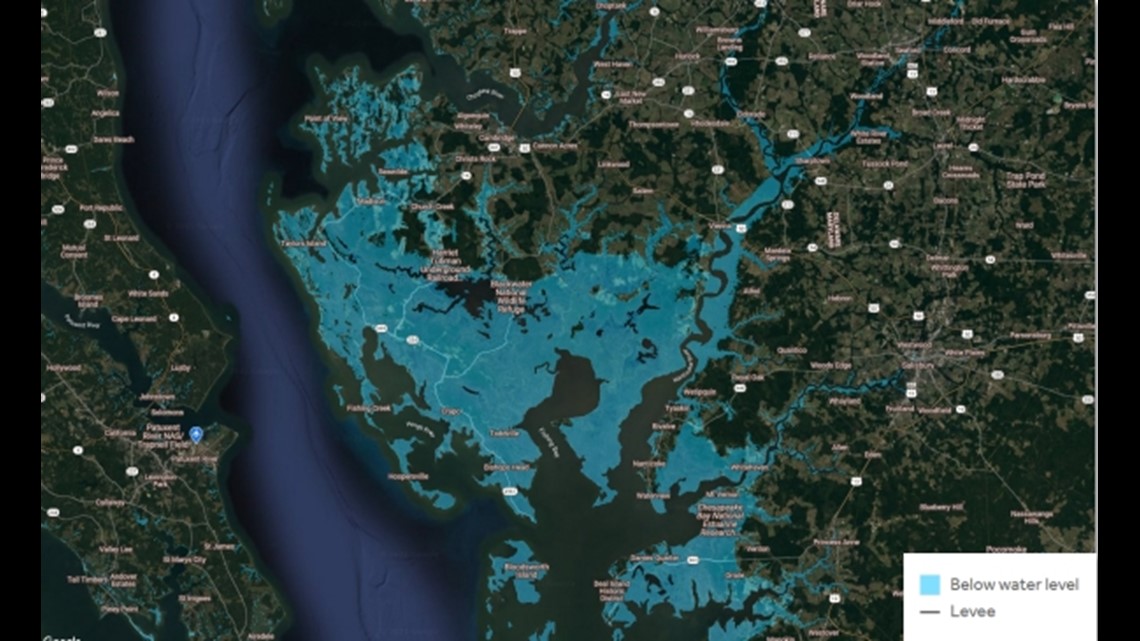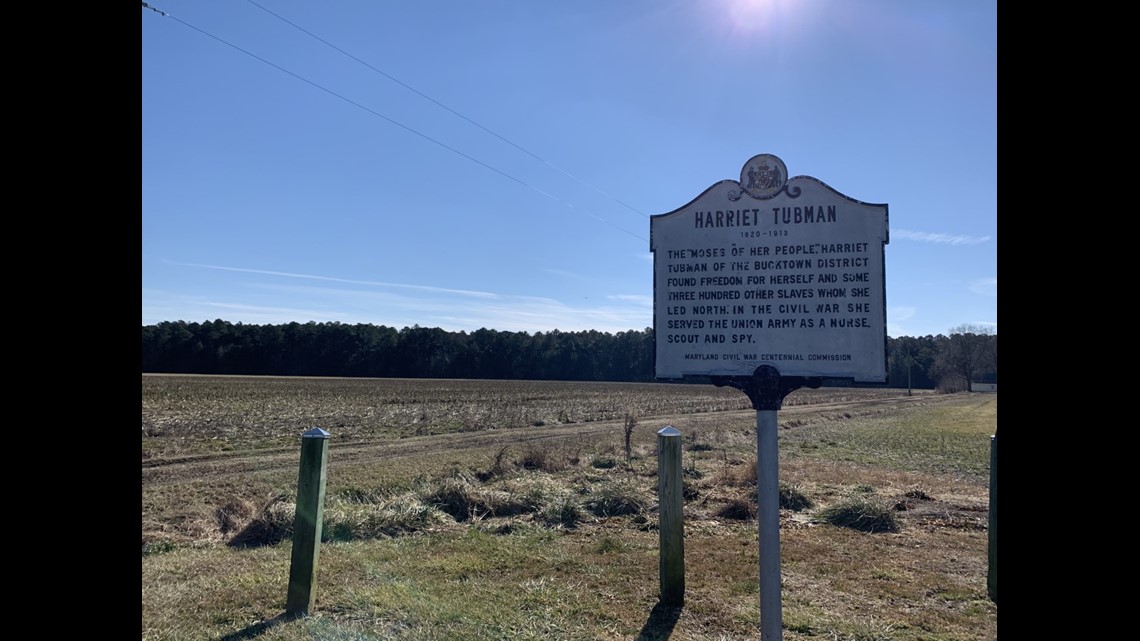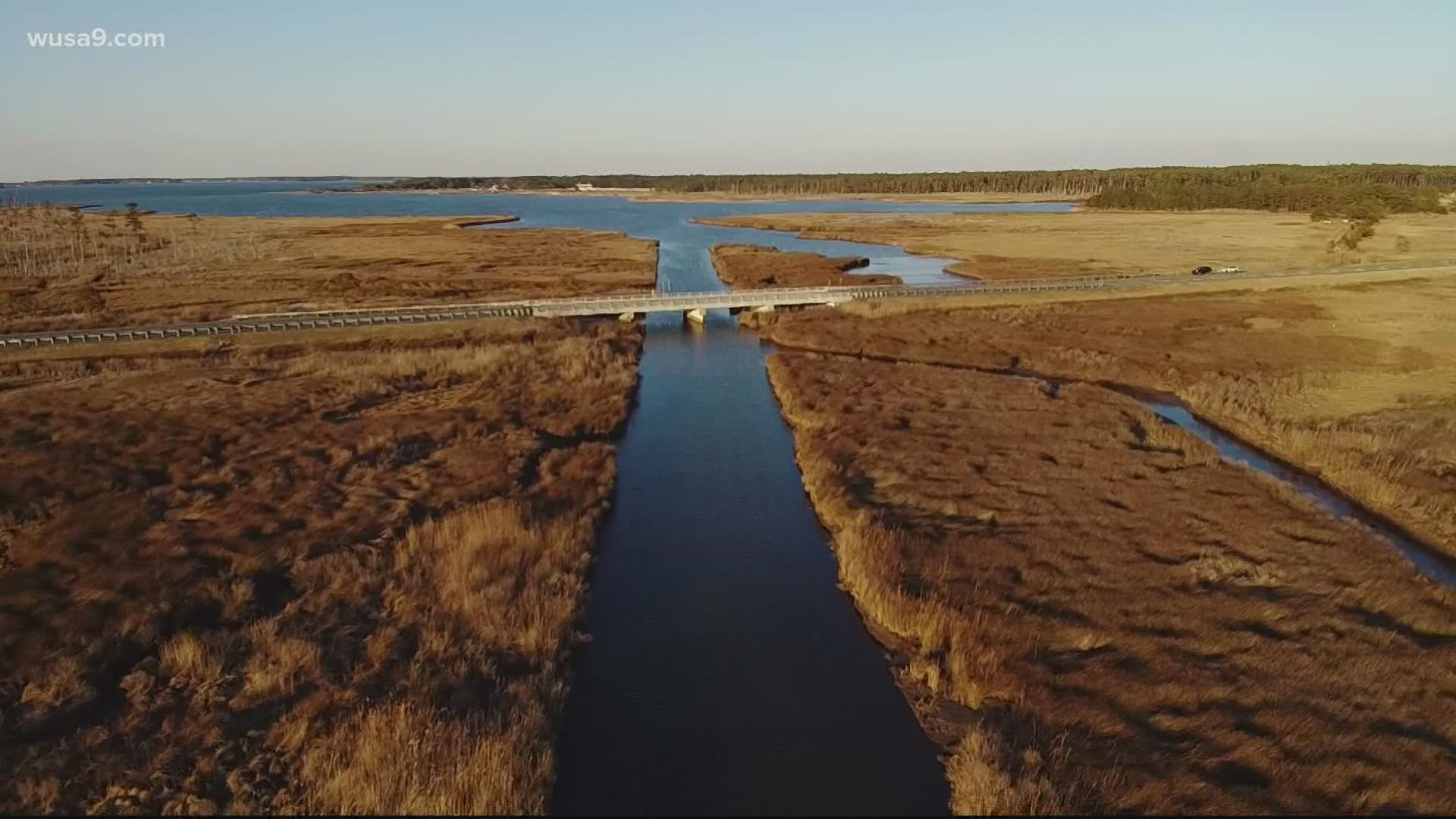WASHINGTON — It's been more than 16 decades since Harriet Tubman guided slaves to freedom along the Underground Railroad Byway, but her presence is still very much alive along the Eastern Shore of Maryland where she was born and raised. But that history is in danger because sea level rise is rapidly changing the landscape of Dorchester county and washing away parts of history.
“This landscape is really largely reminiscent of what Harriet Tubman would have grown up in and what she would have experienced,” recalls Amanda Fenstermaker, the Manager of the Hearts of Chesapeake Country Heritage Area, as she walks along part of the Underground Railroad Byway. “She was strong. She could do anything the men could do and that was really how she learned the skills that she needed to escape and then lead others to freedom.
Like digging by hand the seven-mile-long Joseph Stewart's Canal along with other enslaved and freed black people which laid the foundation of secret communication networks used to escape. But now the historic landmark, along with many others, is experiencing regular flooding.


Ten of the historic byway locations currently have a chronic flooding threat meaning that they’re expected to experience a flooding event at least once a year. And each of these locations holds its own unique place in history.
Like Scott's Chapel, where Tubman's family was believed to have worshipped, and Malone's Church, the first African American church established locally after the Civil War. Both only sit a few feet above sea level, along with the historic Bucktown General Store. It was here Tubman was hit in the head with a brick – aimed at a fellow enslaved man who was trying to escape.


Even the relatively new Tubman visitors center, located where she grew up—along with a number of exhibits about her life, is at risk. Eighteen percent of the site is currently experiencing chronic flooding and that number is expected to grow to 100 percent by 2060.
Estimates show that by 2100 virtually half of Dorchester could be underwater. Which sadly, isn’t a big surprise. Dorchester County has already lost more than 5,000 acres of marsh to open water.
“The land is actually sinking as the result of a glacier to the north of here many, many years ago so that isostatic rebound is coupling with sea-level rise,” explains Michael Roman, the Director of Horn Point Laboratory at the University of Maryland Center for Environmental Science. “The marsh can’t keep up with sea-level rise and that open water is ever-expanding.
Contaminating and ultimately killing trees in its path.
Roman says, “with the open water, the wind builds up waves and that causes more erosion so it’s a self-perpetuating mechanism in these areas of open water are getting larger and larger.”
Changing the landscape of historic landmarks and the lives of current residents.
“People who work here check not only the weather but also the tides to see if they can get back into their homes,” explains Roman. “Many homeowners have raised their homes with a higher foundation or on stilts”
It is threatening these critical parts of history.
“Where possible mechanisms will be put in place to be able to get through the water or raise the facility but in other cases, it may not be possible,” says Roman.
Like Long Wharf Park in Cambridge which was once a regional center for the slave trade and Brodess Farm which is the site of Tubman’s enslaver's home and where she spent her early years. Flooding is endangering archaeological efforts to find historically significant artifacts.


“It’s certainly hard to watch.” Marcia Pradines Long from the Chesapeake Marshlands Wildlife Refuge Complex has seen firsthand the importance of preserving history on the Eastern Shore. Their recent acquisition of a piece of land referred to as Peter's Neck led to the discovery of Harriet Tubman's father's homestead. “If we had not acquired the land and had not been able to partner with the state to find this we might have lost it altogether.”
Pradines Long says there's a lot that has already probably been erased.
"It’s a great example of how protecting natural resources can also protect cultural resources and where we’ve all come from.”
WUSA9 meteorologist Chester Lampkin explains the shifts that are already affecting communities in DC.

